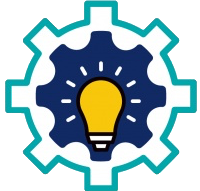Modern Valve Technology
Details :
Power Plant and other petrochemical
industries do deal with different types of valves. All piping systems are
fitted with valves for controlling purposes or safety requirements.
Understanding the function of each valve type will have an important reflection
on the process quality, equipment and plant reliability, and the economics of
the whole activity. Different application needs to select the appropriate valve
type of a particular flow characteristics. Operation of the valve also affects
the system and the process. Understanding the problems associated with valves
is essential for diagnosis and troubleshooting and the needed maintenance for
the particular type of valves.
This five-day Modern Valve Technology
training course will address topics including:
- Valve types; Control Valves, Non-Return Valves
and Safety Valves
- Valve Operation and Control
- Valve Selection and Sizing
- Valve Maintenance and Troubleshooting
- An understanding of valve characteristics and
different parameters affecting the operation of valves
- Knowledge of the main types of valves and the
ability to select the right valve for the particular application including
Control Valves, Non-Return Valves and Safety Valves
- The ability to perform the necessary calculation
for valve sizing
- Knowledge of valve control systems including
actuators and positioners
- An understanding of the problems associated with
valves like flashing, slamming and water hammer
- The ability to perform troubleshooting of systems
involving valves and making decisions on the right maintenance plan
concerning different types of valves
- Engineers and Technicians of mechanical, electrical
and chemical engineering will benefit largely from this training session
- Maintenance, Operation, and People in R&D
departments are recommended to attend also
Day 1 - BASICS OF THE VALVE TECHNOLOGY
- Types of Valves and Selection
- Valve Parts and Components
- Valve Flow characteristics – Linear Valve
Features
- Control Valve Flow Characteristics – Quick
Opening, Linear, Equal Percentage
- Valve-sizing criteria – Valve Coefficient, Cv
- Pressure Recovery
Day 2 - Valve Functions and Types
- Functions of valves and Methods of regulation
- Valve Types – Stopping/starting valves, Control
valves
- Valve end connections
- Valve components and trims
- Types of valves, Globe, Gate, Ball, Plug,
Butterfly Valves, Pinch, Diaphragm Valves
- Pressure Regulation Valves
Day 3 - Check (Non-Return) Valves, Relief
and Safety Valves
- Applications and selection of Check (Non-Return)
Valves
- Types of Check Valves – Swing, Lift,
Tilting-disc, Piston
- Rupture Disk Valves
- Buckling (Shear) Pin Valves
- Relief and Safety Valves Types
- Relief valves problems
Day 4 - Control Valve Actuators and
Positioners
- Actuation systems and forces
- Linear and Rotary Actuators
- Types of Actuators – Pneumatic/Hydraulic, Piston,
Diaphragm, Electric motors
- Actuator Performance and selection
- Valve Positioners and operation
- Examples of valve installation plans and
checklists
Day 5 - Valve Troubleshooting
- High Pressure Drop – Pressure Recovery
Characteristics
- Cavitation and Flashing in Valves –
Cavitation-elimination devices
- High Velocities – Erosion
- Water Hammer – Causes and Solutions
- Surge Protection
- Noise Attenuation Problems
- Troubleshooting the Control Valves
- Valve Inspection & Testing (API598)
- All lectures are in colorful presentation
- All lectures are interspersed with interactive discussion
- All lectures include group discussion, case history and exercises
- Actual major incidents as well as industry experience are reviewed
- Participants receive a multicolor course manual
- Pictures of real incidents and case history are shown
- Videos on the subject are shown
Daily from 09:00 – 14:30 including coffee breaks

